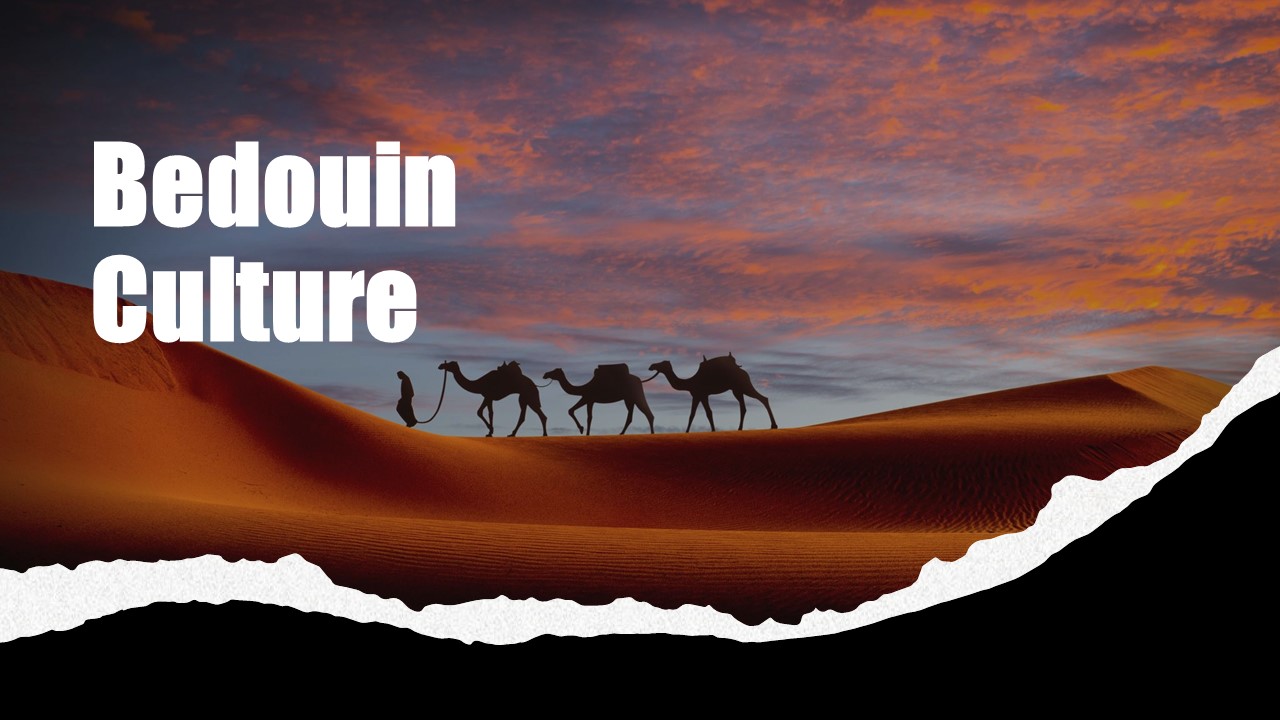“Bedouin culture” encompasses the traditional cultural practices of the nomadic Arabic-speaking peoples that have been living for centuries in the deserts of Jordan, Israel, Syria, Iraq, and Saudi Arabia in the Middle East and the Arabian Peninsula, and in Morocco, Tunisia, Libya, Sudan, Algeria, and Egypt in North Africa.
These people are commonly named in English as Bedouins (sometimes spelled Beduin), while they are originally known in Arabic as “Badawi”, or in plural, “Badw.”
Bedouins speak their own Arabic language (Bedawi), which has several dialects. In the Arabic language, “Bedu” means the people living out in the open, in the desert. Literally, the word “badawiyin” refers to desert dwellers.
Some anthropologists consider Bedouin culture to be the purest form of Arab culture. Because of their rich oral poetic legacy, lifestyle, and code of honor, other Arabs still regard them as “ideal” Arabs.
And according to some recent estimates, the number of Bedouin inhabitants is only around 4 million. Anthropologists identify the Bedouins by their way of life, social structure, language, and culture.
The Appearance of Bedouins
Bedouins are recognizable by their specific appearance, such as their facial features and clothes.
“The men wear long “gallabeya” with a thin cotton pantalon down and a red/white (smaegh) or white (amemma) headscarf, sometimes held in place by a black cord (aghell).”
(retrieved from Bedouin Culture)
“The women wear colored long dresses and, when they go out, they dress in a thin, long, black coat (abaya), sometimes decorated with embroidery. They always cover their hair with a black, thin scarf (tarha). They cover their faces with decorated face veils (burqa’ah).”
(retrieved from Bedouin Culture)
Today, one can see this only in the oldest generation of women. The women of a younger generation simply cover their faces with their “tarha”, and some “dare” to wear more colorful ones (retrieved from Bedouin Culture).
The Way of Bedouin Life
Since the beginning of Islam, Egyptians have referred the Bedouin as ‘Arab,’ which is equivalent with the term “Nomad.” They belong to the nomadic culture that determine many things in their life. In ancient times, many people preferred to settle mostly near rivers. However, Bedouin people chose to live in the open desert.
Most Bedouins are herders who migrate into the desert during the wet winter months and return to cultivated land during the dry summer months. Bedouins herd camels, goats, cattle, and sheep. In the past, some Bedouin tribes raided trade caravans and communities of villagers at the boundaries of settled areas.
They consider themselves to be proud people and appreciate their lifestyle. They are quite suspicious and prefer to avoid talking about their personal lives.
The Family Life of Bedouins
Bedouin societies have tribal and patriarchal organizations. They consist of patrilineal, endogamous, and polygynous extended families. The heads of the families and larger social units that make up the tribal structure are “sheikhs” (or “sheikhs”). An informal tribal council of male elders assists the sheikh. Bedouin culture emphasizes the strong belief in tribal superiority and security that supports people’s ability to survive in a hostile environment. Their extensive kinship networks provide them with the basic needs they need to survive and community support. These traditional networks ensure the safety of families and protect their property. In modern times, however, only about 5% of the Bedouin people still live their pastoral (semi) nomadic life.
The Modern Life of Bedouins
Modern Arab countries tend to modernize their nomadic lifestyles and encourage their citizens to settle in urban areas. These adjustments allow society to provide children with education and health care. Contemporary Bedouin societies gradually change. Men have more leeway in adapting to modern Arab culture. However, many women are still bound by the tradition of an honor culture, urging them to stay within the family (retrieved from Bedouin Culture).
